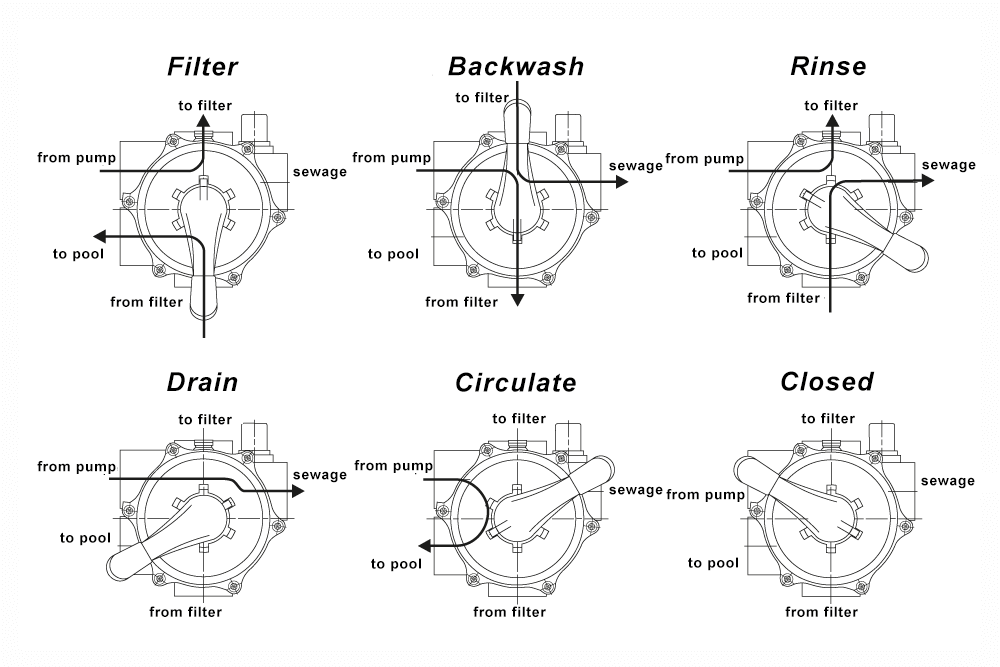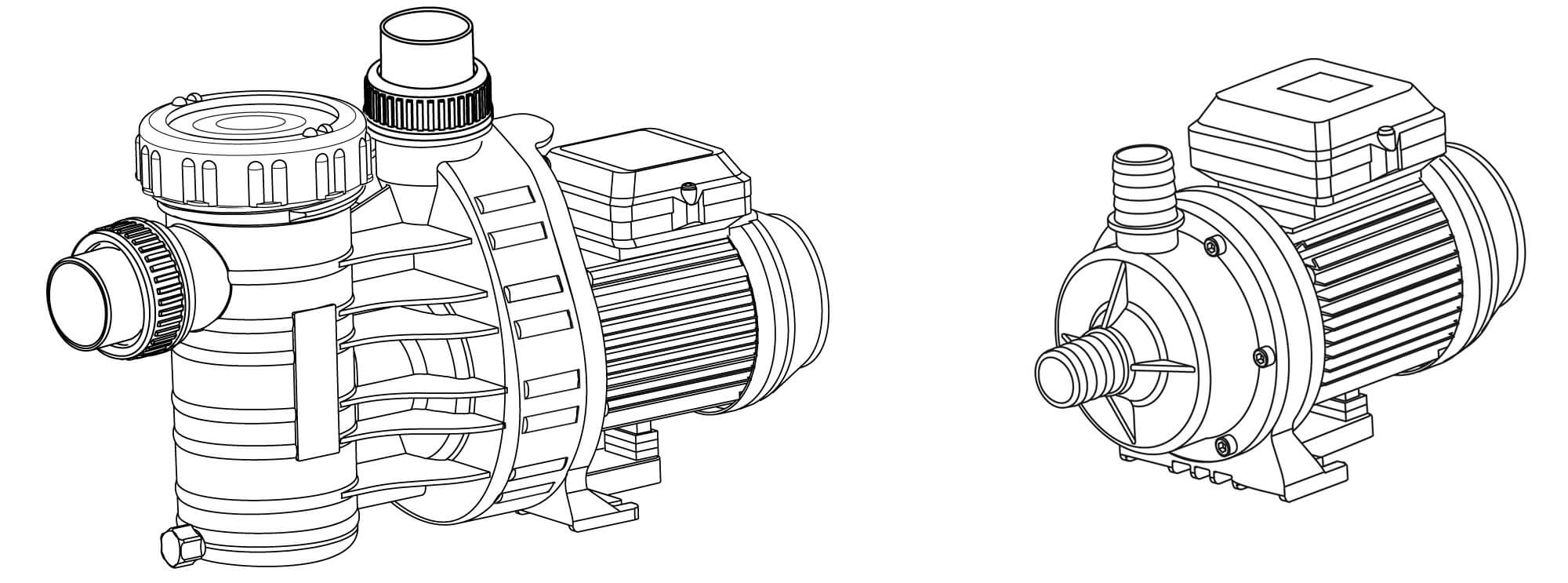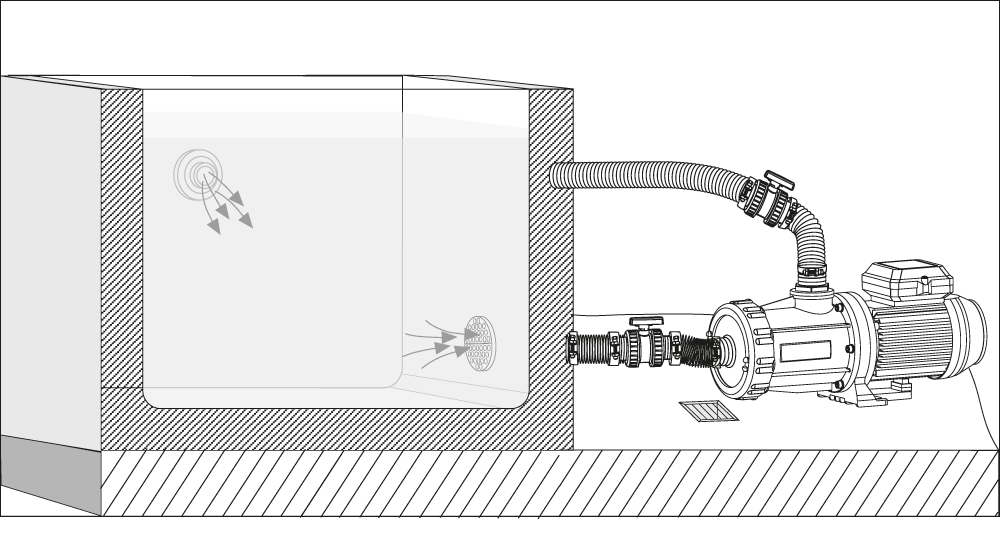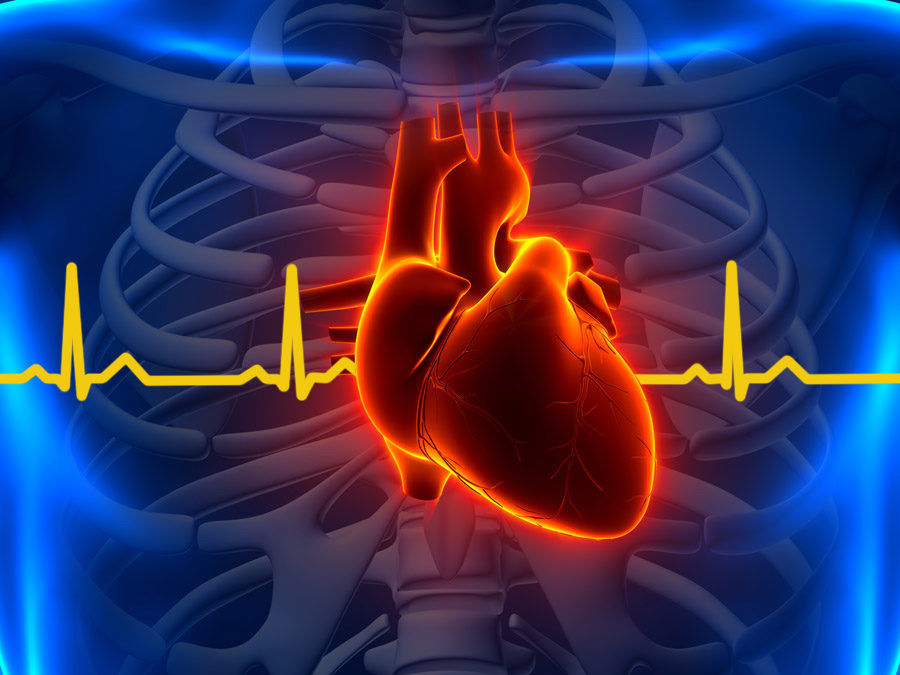The basic principle of a pool pump is the filtering of swimming pool water in order to clean it. Clean water makes the perfect pool – it’s as simple as that. Therefore the pool machine is the heart of every pool technology unit. Here is an overview of the most important facts …
Filtration is carried out during the circulation of the pool water in a cycle. The water is primed by the pump via floor drains, overflow channels or skimmers, cleaned in the filter unit (sand filter) and finally pumped back into the pool as clean water. A robust impeller rotates at high speed within the pump housing and ensures permanent priming of the pool water.

The efficient features of Aqua TechniX filter units
Circulation pumps from Aqua TechniX are constructed in monoblock form. The motor shaft is the pump shaft and there is no shaft coupling. The plastic impeller and impeller hub coat the metal motor shaft. Together with the special impeller construction, the mechanical seal separates the water-bearing part of the pump housing from the motor shaft thus completely preventing contact with the pool water. The water-bearing part is therefore safely and reliably separated from the live parts. The impeller is driven by an efficient electric motor.

The monoblock construction of Aqua TechniX pool pumps (left self-priming, right non-self-priming)
The motors in Aqua TechniX pumps are generally single phase units, with a protection class of IP X5, and can be operated on the regular public mains supply (230 V). They are wired ready for connection (with cable and plug) and are protected from the motor winding overheating by internally installed thermal protection switches. The winding protection contact works fully automatically, meaning that as soon as the motor has cooled, it will automatically be turned back on again.
The strainer basket protects the pump itself from coarse contaminations. Some pumps are also equipped with an additional strainer basket for hair and fibres. Either way, every strainer basket must be cleaned regularly in order to prevent the pool pump’s function from being compromised. How frequently the strainer basket requires cleaning depends on the intensity of the pool usage and how much the area surrounding the pool impacts on its cleanliness e.g. sand, leaves, insects etc. We would recommend weekly visual inspections/cleaning. In this way, nothing can become blocked.

Two types of circulation pump are available for private swimming pools: non-self-priming pumps and self-priming pumps. The difference is that self-priming pumps can be installed above and below the water level. However, in terms of the whole unit, it is more beneficial to install the pump and filter unit below the water level – the shorter the distance, the more efficient the operation.
Self-priming filter pumps can handle air, as opposed to non-self-priming pumps, as they can aerate the suction line independently after initially being filled with water (through the lid in the filter housing). These filter pumps can be used above water level without any problems. Operating manual handheld floor cleaners is also easier with self-priming pumps, as the pump is able to handle air.
Non-self-priming pumps are unable to handle air. They must be installed below the water level so that the pool water can flow into the pump independently. If the flow rate is interrupted, sooner or later the non-self-priming pump will go on strike.

The Aqua Splash non-self-priming pool pump
Suction and pressure lines
Each set of piping has to be individually adapted to suit the application conditions such as the pump (construction, performance), the pool (volume, depth), the distance and the difference in height etc. Basically, the following applies:
- The further away the pump is from the swimming pool, the larger the suction and pressure lines have to be dimensioned (diameter).
- The shorter the pipes, the better the suction performance – and the less friction loss in the unit.
- The flow speed should not drastically exceed 1.5 m/sec in the suction line and 2.0 m/sec in the pressure line.
- Self-priming pool pumps can overcome heights of up to 3 m.*
- The priming time can reach up to 12 minutes for very long suction lines.
*Normally pumps can overcome heights of up to 8 m, however when dimensioning units for self-priming pool pumps, you also have to take the handling of larger dirt particles etc. into account.
